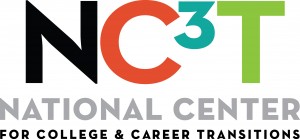 Recently, I heard the U.S. described as a country where there are “workers without jobs†and “jobs without workers.†This is pithy way to describe the skills-worker mismatch that explains the paradox of our modern workforce.
Recently, I heard the U.S. described as a country where there are “workers without jobs†and “jobs without workers.†This is pithy way to describe the skills-worker mismatch that explains the paradox of our modern workforce.
In this paradox, America has millions of long-term unemployed who can’t find meaningful, gainful employment. America also has millions of jobs (mostly with specific skill requirements) that can’t find qualified workers.
When we play out a root cause analysis, there are many complicated and interconnected factors, such as globalism and the rise of internet-enabled and robotic technologies. These factors are disrupting entire industries and reshaping the way work is done, which has a tumultuous impact on staffing.
But we also know that one root cause of the workforce mismatch is that too few young Americans – only about 50 percent – are completing postsecondary degrees and earning skill credentials by their mid-20s. This low rate of postsecondary attainment occurs despite the fact that about two-thirds of them are enrolling in postsecondary education fairly soon after high school graduation. Â At the same time that our young people are underperforming in attaining skills and degrees, our relatively higher-skilled baby-boomers are beginning to leave the workforce.
Further root cause analysis ultimately takes us back to the K-12 environment.
I’m going to focus on two essential gaps in the preparation of many teens. Based on the work of the Gallup Organization and Dr. William Damon respectively, we know that over one-half of high school students are disengaged learners, and that three-quarters of teens are disengaged, dabbling, or dreaming, whereas only one-quarter are “purposeful.†I believe we can safely estimate that at least one-half of our high school aged students are part of a personal motivation gap, a college-career decision-making gap, or possibly both.
Here’s what I mean by personal motivation gap and the college-career decision-making gap.
Personal motivation gap: Too many students lack the personal motivation to put forth personal effort into their education. They may be students of average achievement who could be higher performers with stronger personal motivation. They could be students from difficult economic circumstances who need extra internal motivation to make the effort needed to strengthen their personal academic skills and find a way to participate in postsecondary education and training. The clear fact is, if students aren’t personally invested in the purpose of education, many simply won’t do the work. Their personal options will be limited as a result, and the education system won’t attain its goals of higher rates of student proficiency.
College-career decision-making gap: Too many students don’t have the knowledge and skills to make reasonable, well-informed choices about education and training after high school. The result of this gap is that students enroll in postsecondary education without clear purpose, and often drift from one major to the next. If they do graduate, it takes significantly longer than it should – but many never graduate at all. And many other students who should consider education and training after high school write it off entirely, because they feel it’s unaffordable or they just don’t like school.
Not surprisingly, the personal motivation gap and the college-career decision-making gap are intertwined. If students have more knowledge and positive experiences with skills, careers, and how postsecondary education could be affordable and attainable, it would have a positive impact on their personal motivation.
The Solution?
The Pathways System approach, which includes intentional and sustained career development, high quality pathways programs of study that reach all students, extensive employer engagement with students, and a partnership structure among community stakeholders, is a key organizing strategy to address the twin challenges of motivation and informed decision-making.
I believe that offering signature pathway programs that only reach a small percentage of students is a good start, but it’s not enough: Having programs for the elite students or the very needy students or so-called “pocket†career academies, existing within a general high school system, simply perpetuates the notion of college OR careers.  It perpetuates the idea that career-themed programs are for those students who can’t cut it in the traditional college-prep environment, rather than promoting the concept that pathways will also boost the achievement and engagement of higher achieving students. The Pathways System will work to engage all students, strengthening personal motivation and informed decision-making.
Please take a look at how we’ve laid out the pathways concept and the process for communities to develop a Pathways System plan. PATHWAYS SYSTEM OVERVIEW
Let’s continue our work at strengthening the quality of CTE and STEM programs, and integrating them into comprehensive Pathways Systems.
This blog post was contributed by Hans Meeder, President of the National Center for College and Career Transitions, a participant and gold level sponsor at the 2014 NASDCTEc Fall Meeting.

